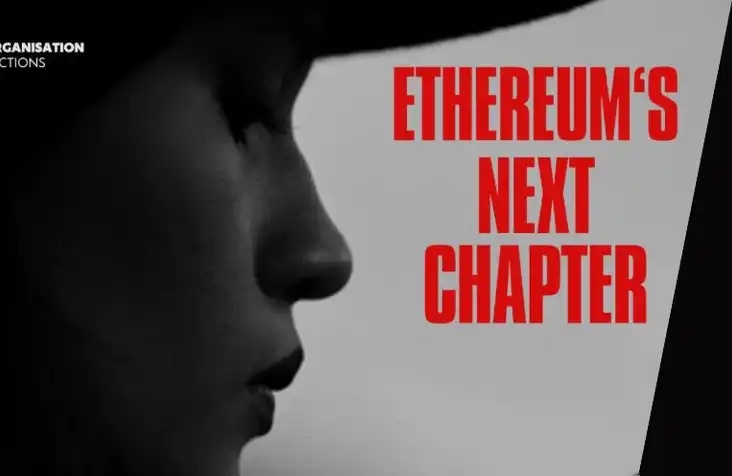Pendle: Low-Key, Yet Dominating DeFi
After another round of rollercoaster in the crypto market, people have become cautious or even pessimistic about the future. Many meme coins and projects based on "concept over substance" have fallen one after another, prompting the market to reexamine fundamental value.
This process is like the self-healing of the soil after a forest wildfire, where the frenzy and speculation have been burned to ashes. Projects that truly root in underlying financial logic and serve long-term needs have begun to receive attention. Pendle is one such DeFi dark horse that emerged after the last bull market's collapse, single-handedly pioneering the crypto yield farming track. Recently, Pendle achieved an important step in its 2025 Citadels strategy by announcing a partnership with the quant fund Fasanara Digital, actively bringing traditional capital into the industry.
The Undisputed Leader in Yield Trading
Since its launch in mid-2021 under the name Benchmark, Pendle pushed its TVL to nearly $40 million in the aftermath of DeFi Summer. Subsequently, amid the extended bear market and the shattering of the DeFi Lego, its TVL also dropped to $4 million. During this time, even more prominent projects announced their service halts, seemingly debunking the DeFi yield-farming track.

In hindsight, for Pendle, all the early-TVL fluctuations were merely imperceptible ripples.
Just as NVIDIA accomplished a triple play with gaming, mining, and AI, the unyielding Pendle team, with a profound understanding of traditional markets and ultimate insight into the crypto market, consecutively hit the Ethereum PoS transition-fueled LSD craze and the current hot yield stablecoin track like using cheat codes. Just as Uniswap defines DeFi trading and Aave defines DeFi lending, Pendle has become the industry standard in DeFi yield farming, also standing out as one of the few DeFi stars in this bull market.
Furthermore, in the DeFillama's yield-farming track, Pendle once occupied over half of the TVL, maintaining absolute dominance that other DeFi protocols couldn't reach.

Not only is the TVL enormous, but the Pendle protocol's robustness and security are also top-notch in the industry. Because the Pendle protocol settles expiring PT and YT positions, there are significant TVL fluctuations on specific dates. Despite this, Pendle still maintains smooth operation and high-value lockups. For example, in June 2024, Pendle settled several billion in expiring positions within a few days. Such short-term liquidity shocks are enough to pose significant risks to many DeFi protocols and even some public chains. Still, Pendle, with its rigorous smart contract design, managed to smoothly handle such massive fund movements in a very short period. Moreover, in today's market environment, through integration with different protocols, Pendle's TVL is still expected to exceed $5 billion in 2025, demonstrating that the funds and user base it attracts are not chasing short-term trends but have a deep appreciation for the project's underlying logic and long-term value.
As for protocol transaction volume, Pendle's daily trading volume has surged from $1.1 million in 2023 to $96.4 million in 2024, nearly a 100x increase. Additionally, trust in Pendle by users has significantly increased, with holding over $100 million worth of PT becoming commonplace.

Not only in terms of data, but there is also a significant number of "crypto whales" in the community who, leveraging Pendle's services, have weathered multiple rounds of market turbulence, locked in earnings, and even smartly gained extra returns through YT. Pendle has become the most effective and indispensable weapon for these DeFi whales and smart money. Apart from Pendle Intern's broadcasts, some "wealth myths" are also widely spread in the community. For example, Ethena Gua Ge, through actions such as shorting the base coin by purchasing YT and selling YT to lock in earnings, has earned additional returns.

Source: Gua Ge
Pendle's "Interest Puzzle"
This article does not delve too much into the breakdown of Pendle's principles. In simple terms, Pendle tokenizes the future income of interest-bearing assets (PT) into Yield Tokens (YT), making it tradable, where PT is responsible for fixed income and YT represents income trading. For example, you can think of Pendle as a machine that "splices" your crypto assets in time: it splits your assets into "Principal Tokens (PT)" and "Yield Tokens (YT)." PT is like the "fixed part" of your existing funds, while YT is the "future red envelope" generating interest.
If a user holds PT and holds it to maturity, they can lock in the principal, no longer bearing income volatility, with YT treating income as a separate target for more users seeking speculation, hedging, arbitrage, and point accumulation. By freely trading PT and YT in the market, users can both lock in current value and flexibly hedge or chase potential returns, thereby gaining more strategic choices and opportunities in the DeFi world.
While in the crypto industry, yield trading is not common, with a penetration rate of only about 3%. However, in the traditional financial sector, whether it's bond trading or interest rate swaps, the scale is massive, serving as one of the cornerstones of the global financial system, with the interest rate market size exceeding 60 trillion dollars. By 2024, the nominal principal amount of the Chinese Renminbi interest rate swap market reached 360 trillion yuan. In 2024, the U.S. Dollar interest rate market also achieved a record-breaking trading volume with a nominal transaction amount of 264 trillion dollars. It can be said that in traditional finance, yield trading is crucial for the development of the financial market.
In comparison, although Pendle has achieved significant growth and entered the ranks of blue-chip projects in the crypto market, there is still a significant gap compared to the overall size of the traditional financial market. This means that the interest rate derivatives track where Pendle is positioned still has tremendous growth potential.
On the one hand, Pendle has become a cornerstone in the DeFi yield trading field; on the other hand, traditional financial institutions' demand for on-chain finance is rapidly increasing. According to Paradigm's "TradFi Tomorrow" report released on March 18, two-thirds of TradFi institutions have entered DeFi. This makes projects like Pendle, which inherently have the ability to connect DeFi and TradFi, play an important role in the future yield trading market, bridging the liquidity between both sides and connecting the two markets.
Raising the Bar
Focusing on the present, Pendle's recent progress has also been rapid. Just listing a few recent activities and partnerships includes the integration with the Sonic chain—a long-established financial chain with strong DeFi roots, collaboration with the hot BNB Chain project, ListaDAO and Astherus both integrating with Pendle to allow users to obtain Launchpool project tokens at a lower cost. DeFi and tokenization are also the fundamentals of Pendle V2, and besides that, Pendle's three main pillars are Boros and Citadels.
The team has stated that the term Boros comes from Greek, meaning "devour," symbolizing Pendle's aggressive growth strategy aimed at capturing and absorbing various forms of yield. Boros introduces margin trading functionality, allowing users to trade various yield assets with higher capital efficiency, including on-chain and off-chain yields. This means that users can amplify yield exposure through leverage trading to achieve higher potential returns.
In addition, Boros also incorporates funding rates into the tradable range, filling the market gap for large-scale hedging funding rate tools. For example, traders can more accurately trade the funding rate, allowing for more strategic choices, such as simultaneously longing SOL funding rate and shorting ETH funding rate to capture the spread.

Another pillar, Citadels, aims to expand Pendle to non-EVM ecosystems such as Solana, Ton, and Hyperliquid, and establish connections with traditional finance, providing KYC-compliant and Islamic law-compliant products. This will help Pendle expand into new markets, attract institutional investors, solidify its leadership position in the DeFi space, and increase TVL.
A notable aspect of Citadels is Pendle's plan to develop its PT into a reliable fixed-income investment product to attract traditional financial giants, meeting the significant demand from cryptocurrency investment institutions and traditional financial institutions for long-term fixed-income products. Pendle will also have the opportunity to further collaborate with traditional financial institutions, bringing deeper expansion to Citadels, while the development of PT will boost the organic growth of Pendle's transaction funding pool, providing greater support for the income trading in the crypto industry.

On March 31, Pendle announced a partnership with the renowned quantitative hedge fund specializing in alternative credit, Fasanara Digital. As a prominent alternative asset management company, Fasanara Capital's digital asset division Fasanara Digital boasts extensive financial and technological strength in the crypto industry, making a significant contribution to promoting the convergence of Tradfi and crypto. This undoubtedly showcases Pendle's continuous expansion into the traditional financial industry.

As an industry leader, Fasanara Capital undoubtedly places a high emphasis on asset security, funding rates, and flexibility. Pendle enables Fasanara to choose structured products from a diversified asset base including BTC, ETH, and stablecoin derivatives, demonstrating high recognition of Pendle's security and liquidity. Through Citadels, Pendle acts as the institutional fixed-income infrastructure, much like banks serve as credit infrastructure.
Smart Money and Smart Investment: Reassessing Pendle's Long-Term Value
As the market transitions from frenzy to calm, "smart money" begins to replace speculative funds as the mainstream. The term "smart money" not only refers to those with additional information but also those with professional research teams, extensive experience, and a focus on long-term value. They often strategically position themselves when the market cools off, seeking high-quality projects that truly address core needs, have sustainable cash flow, or possess technological moats. Pendle's attractiveness in this regard becomes increasingly apparent:
1. Real Yield Scenarios: The market demand for fixed income and hedging strategies has been repeatedly validated in traditional finance. Therefore, once Pendle effectively translates these models into the DeFi world, the probability of attracting various long-term funds is high.
2. Technological and Compliance Extension: Through the Citadels initiative, Pendle is no longer limited to the crypto sphere but actively engages with emerging markets such as TradFi and Islamic finance, expanding its reach to a broader range of funding sources.
3. Controlled Risk, Stable Returns: Tools like Boros provide robust "hedge" mechanisms for the highly volatile perpetual contract market, enabling institutions and professional traders to more flexibly allocate and manage funding rate risks.
During market downturns, "dumb money" gradually retreats, and "smart money" becomes mainstream. Pendle's interest rate derivatives and fixed income products act like a magnet, attracting funds seeking stable, efficient, and secure returns. Unlike projects that rely solely on concepts and packaging, Pendle offers its users, LPs, and institutional investors tangible financial instruments. This grounded positioning also allows it to have a significant long-term growth trajectory, gaining more and more favor from funds.
A Revival of Valueism
The cryptocurrency industry post-bubble burst is reexamining "what is truly meaningful innovation and what constitutes sustainable value." The essence of DeFi is not in high APY Degen farm pools but rather in financial innovations that can align with the real world. Therefore, amidst the market hype and numerous competitive projects, only protocols that can genuinely provide practical functionality and address real pain points will survive in the long term. Along this path, Pendle is not just a DeFi protocol but also a beacon for the entire industry, serving as a bridge from traditional finance to the emerging blockchain ecosystem, bringing a comprehensive upgrade to fixed income and interest rate derivatives.
As the market gradually returns to calm, this is an opportune time for those who aspire to long-term strategies to reconsider and seize the opportunity. Through sophisticated "interest rate puzzles," Citadels tailored for compliance and diverse markets, and the high capital efficiency of Boros, Pendle paints a picture that encompasses both DeFi and TradFi.
Where there's yield, there's Pendle.
Welcome to join the official BlockBeats community:
Telegram Subscription Group: https://t.me/theblockbeats
Telegram Discussion Group: https://t.me/BlockBeats_App
Official Twitter Account: https://twitter.com/BlockBeatsAsia
 Forum
Forum OPRR
OPRR Finance
Finance
 Specials
Specials
 On-chain Eco
On-chain Eco
 Entry
Entry
 Podcasts
Podcasts
 Data
Data







